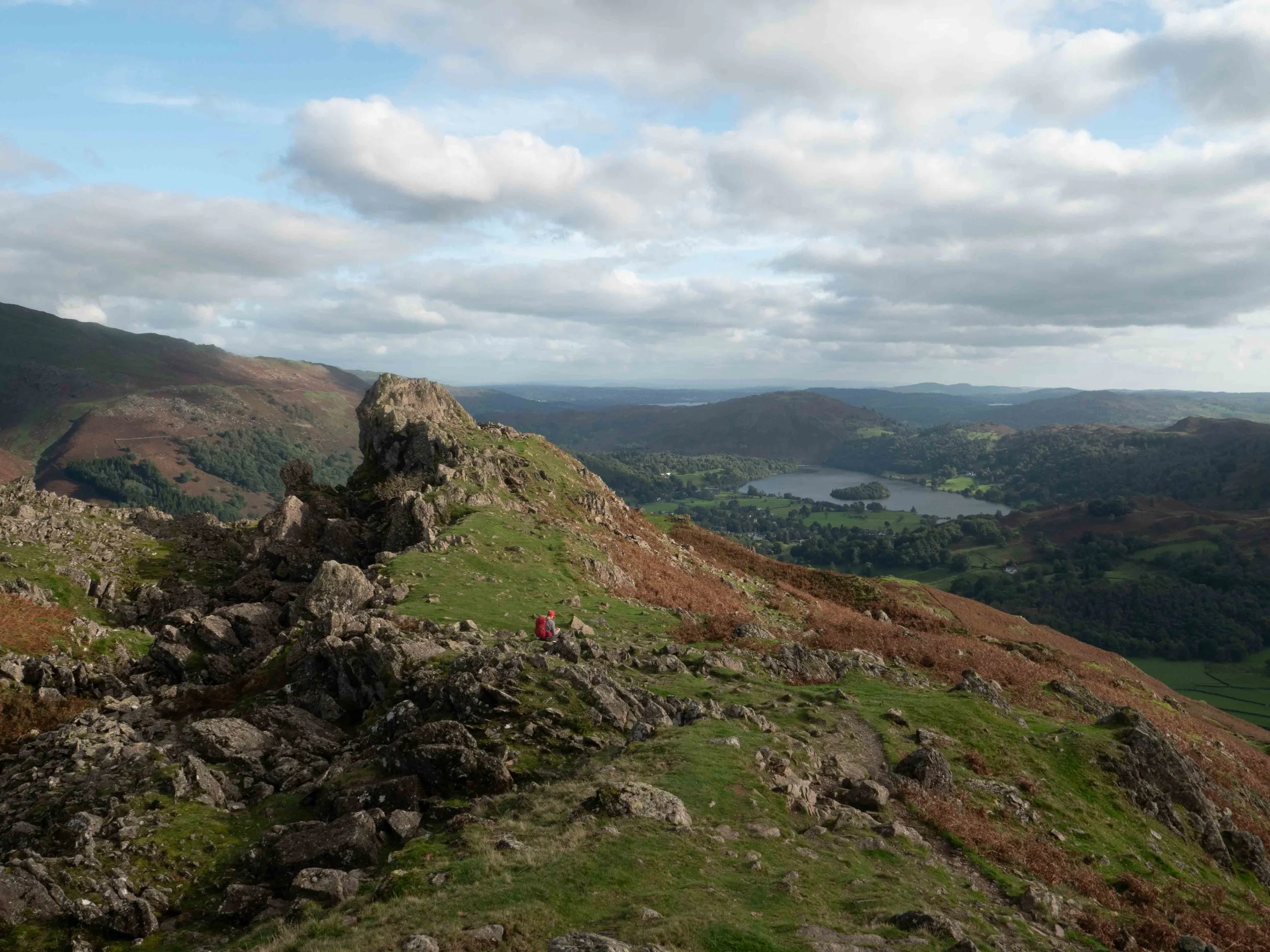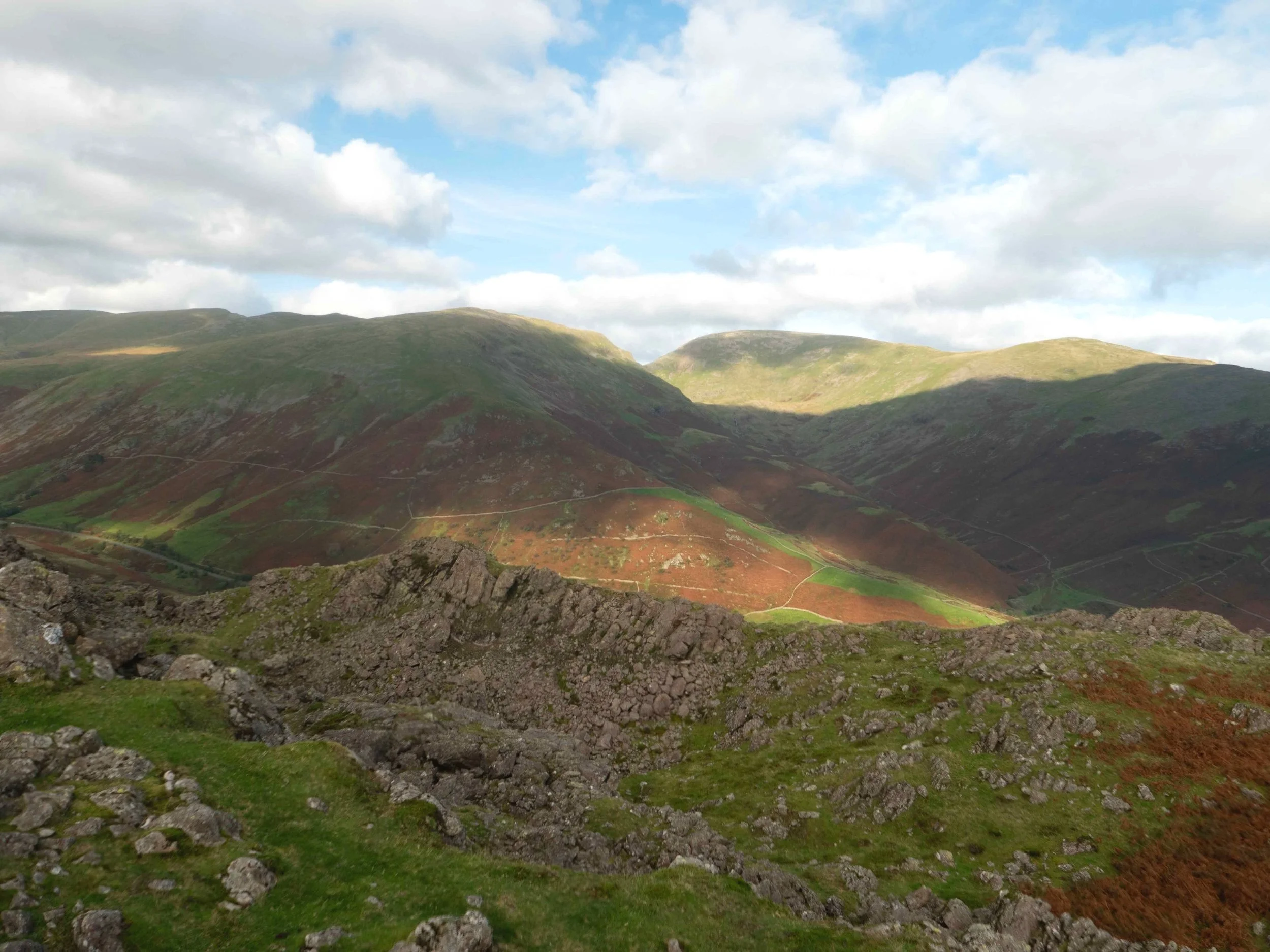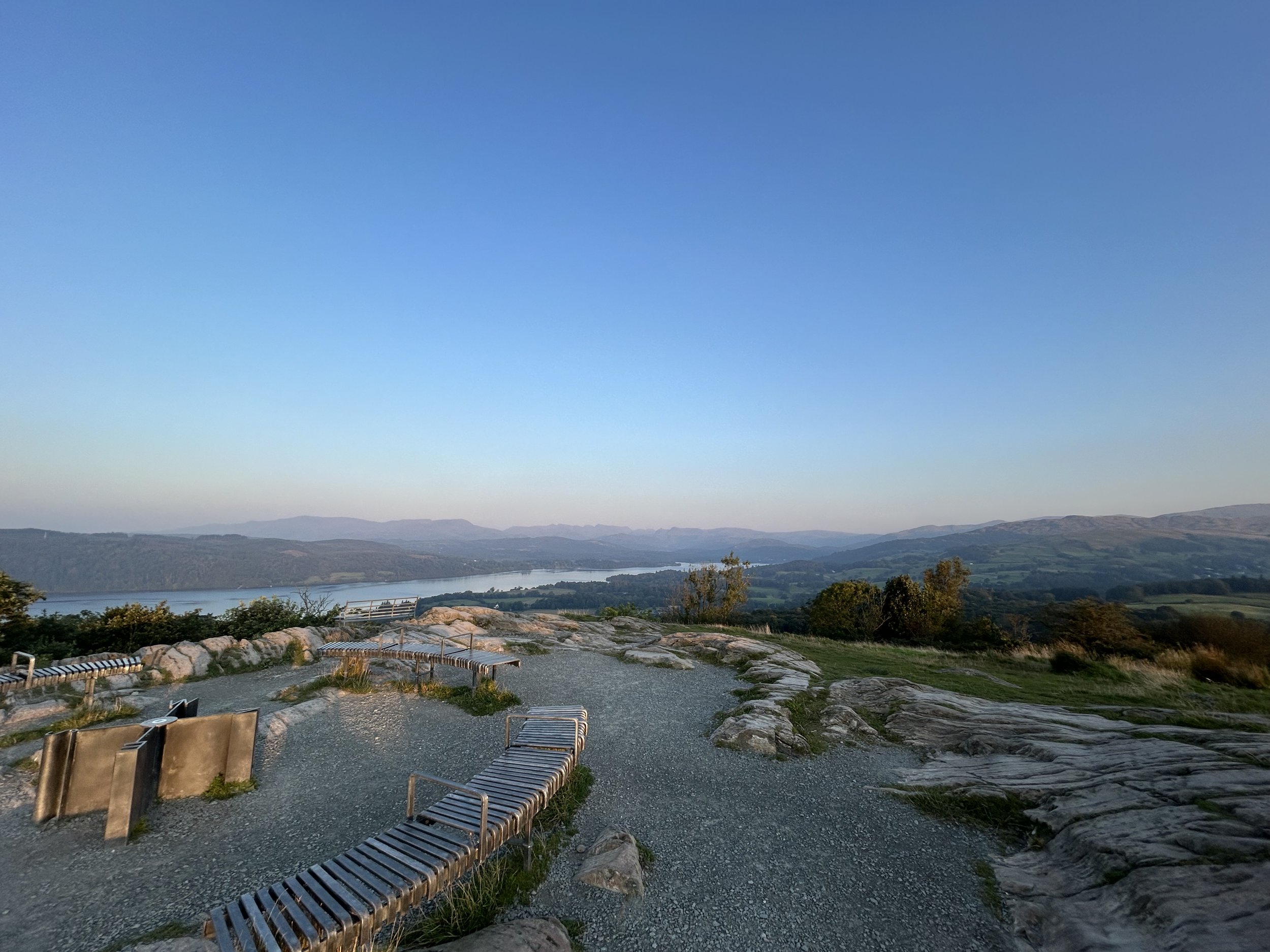Lion & the Lamb (Helm Crag)
A guide to hiking the famous Lion & the Lamb, Lake District
The Lion and the Lamb walk, also known as Helm Crag, holds a special place for many who have spent time in the Lake District. It was my first climb with my grandparents, and it offers some of the best views in the Lakes.
For lots of walkers, this small fell is one of their first memories of the area’s iconic landscape. It’s not particularly tall, making it an easy climb for beginners and families. Plus, it’s just a short stroll from the village of Grasmere, so it’s very accessible.
From the valley, Helm Crag is one of the Lake District’s most recognisable fells. But to be honest, seeing the shape of a lion or a lamb in the rock formations takes a bit of imagination!
The path is well-maintained and gently winds upward, offering fantastic views over Easedale Tarn, and back toward the charming village of Grasmere. You can also spot Loughrigg Fell from here, which is another easy and beautiful climb in the Lake District. Whether you're an experienced fell-walker or it’s your first time visiting, Helm Crag has the perfect mix of adventure and nostalgia, making it a must-do.
Key info
Total Distance: 6.5km
Location: The route starts and ends in the village of Grasmere. Grid: NY 337075 and Postcode: LA22 9SW
Where to stay: There are plenty of campsites nearby and the villages of Elterwater, Chapel Stile and Grasmere have great places to stay
Difficulty: Easy with uphill, grassy sections
The Lion and the Lamb Walking Route
Map of Lion & the Lamb hiking route
Start in Grasmere: Begin your walk from the village of Grasmere, a charming starting point that’s easy to reach. There is plenty of parking in the village and I suggest parking at Red Bank car park (LA22 9SW). Once ready, head to the village green that marks the starting point of the route. Follow signs for the Grasmere trail up towards Allan Bank.
Ascending Helm Crag: The path begins to climb as you leave the village, through farmland, woodland and then onto the trail. Traverse along the well-worn trail that winds up the side of Helm Crag. The path becomes rockier as you ascend, but there are no significant difficulties. Make sure to take breaks to enjoy the fantastic views back over Grasmere and the surrounding fells.
Reach the Lion and the Lamb: As you approach the top, you’ll come to the famous Lion and the Lamb rocks. While they might not look exactly like their namesakes, they make for a great photo opportunity.
Final Push to the Summit: Continue along the path past the Lion and the Lamb. The last bit to the summit involves a short scramble over rocks, but nothing too tricky. Once you reach the top, take some time to soak in the panoramic views of the Lake District – they’re well worth the climb!
Descent Towards Grasmere: After enjoying the summit, begin your descent by retracing your steps back towards the Lion and the Lamb. Follow the path back down the way you came, taking care on the steeper sections. The path down is straightforward but can be slippery if wet, so watch your footing. Once you’ve made it down the steeper parts, don’t forget to get some of the famous Grasmere gingerbread.
Things to plan
First, check the weather forecast before you set off. The weather in the Lakes can be unpredictable, and it’s always better to be prepared for sudden changes. Even though Helm Crag isn't as challenging as some other fells, you’ll still want to dress appropriately and bring the right gear. Sturdy walking boots with good ankle support are essential, and make sure to pack a waterproof jacket and trousers just in case. It’s also smart to bring along warm layers, a hat, and gloves, especially if you’re walking outside of summer.
View from the Lion and the Lamb
Location
The Lion and the Lamb, is located near the village of Grasmere, in the heart of the Lake District National Park. The nearest larger town is Ambleside, which is about a 20-minute drive away. Ambleside is a popular base for exploring the Lake District, with plenty of options for accommodation, including hotels, B&Bs, self-catering cottages, and campsites.
Getting There:
Getting to Grasmere is straightforward, with good road access and frequent bus services from other parts of the Lake District. If you're travelling by train, the nearest station is Windermere, from where you can catch a bus or take a taxi to Grasmere.
Kit list for climbing Bowfell
Here's a list of essential items to bring:
Sturdy walking boots and socks with good ankle support
You can get a decent pair of boots from Cotswold Outdoors, Mountain Warehouse or Blacks. You don’t need to spend a load of money, but anything with ankle support should do the job. I have the Scarpa Rush TRK Gore-Tex boots and they are fantastic!
Hiking socks: I personally use Smartwool merino wool socks which are incredibly comfy, help keep my feet dry
Daypack: when out walking in the Lakes, I always take my Osprey Talon 44L bag. I recommend the Osprey daypacks such as the Talon range for men and Tempest range for woman.
Waterproof jacket and trousers - even in the summer, taking a waterproof jacket that offers protection from the wind is key
You don’t need to spend a lot of money, but if you are going to be hiking often then investing in a good waterproof may be a good idea
Warm layers
Fleece - My go-to warm layer - Patagonia R1 Fleece
Warm gloves or mittens: I personally use the Rab Mens Pivot GTX Gloves and these worked well on my recent winter hiking trips.
Lightweight Gloves: For lower hills I recommend lightweight, fleece or quick drying fabric gloves. I personally use the Sealskinz unisex waterproof gloves if it is raining and the Montane Prism gloves if it is dry but windy (they are lighter and a little more comfy.
Neck bandana or scarf: For the chilly days on the mountain, I recommend bringing a neck gaiter or bandana. I recommend the Buff unisex bandana.
Map and compass (and the ability to use them)
Trekking poles: Trekking poles can reduce the impact on your joints by up to 20%. I recommend adjustable Black Diamond or Leki trekking poles
Food and water
Kendal Mint Cake is my favourite snack for any walk and is a famous snack still made in the Lake District
Water bladder / bottles: When out in the fells, I aim to drink at least 1L of water. I recommend the Osprey 2 litre water badder which can be used in most backpacks.
Sunscreen and Bug Spray
First aid kit - a small mix of plasters, Savalon (for bites and stings) and antiseptic wipes will do
Head torch: You will need a head torch with a decent power for any trips to the loo and more importantly the summit hike. I personally use a Petzl ACTIK® 600 CORE which is affordable and has a decent battery life. You’ll also need spare batteries as the cold will drain them quicker.
Mobile phone (with a full battery) + portable charger.
I recommend any Anker Power Bank as they are reliable and well made. I use the USB-C 10,000 maH with 20W model. It charges my phone and watch when wild camping and is a great lightweight option
View over the Langdales

















